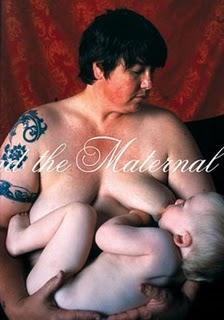Feminist Art and the Maternal

As a teen, I imagined I would someday grow up to be an artist. As an eager feminist and first year university student, I took an art history course taught by an incredibly self-important professor. In all of his slide shows, I only remember two images being attributed to women artists. This experience did not encourage me to embark upon an artistic career.
In a world where feminism is often assumed to be irrelevant and the Guerilla Girls have purportedly bequeathed their archives to the Getty Research Institute, a book which showcases any form of feminist work is a welcome standout. Andrea Liss’s Feminist Art and the Maternal places feminist artwork front and center using the creations of contemporary visual and performance artists. In doing so she displays the many ways in which women artists have challenged individual and institutional attempts to define the scope of femininity and families, as well as the limits of women’s gendered work and status in society.
Feminist Art and the Maternal is a fairly accessible text, even for the non-artist or art history student like me. Using the work of women artists spanning the last thirty years, Liss systematically demonstrates how these women have used their experiences of maternal parenting and motherhood as the subject of their work to created pieces that challenge past and current definitions of appropriate gender roles. This happens in many ways, such as breaking down assumptions about family structures or conflating accepted stereotypical images of racialized women with visual statements on sexual orientation, nurturing, and motherhood.
Sentimental ideas of motherhood are challenged by explorations of the maternal focusing on sensuality or experiences of trauma and loss. Key methods of articulating these concepts and experiences are laid out by the author in each chapter and accompanied by the work of one artist or groups of artists which exemplify each particular method. Highly conceptual artwork—still images, performance pieces, film—and theoretical terminology are explained in great detail, making the social and historical context in which the work was created clear for the reader.
Like the artists whose work is contained in the book, Liss attempts to make a connection between the personal and political by incorporating her own experiences of motherhood into the book. These sections of writing are less successful in that they do not blend seamlessly with the remainder of the detailed text, but stand out in competition to the parallel experiences articulated by the artists in their work, and interrupt the overall flow of the book. While the many black and white images help to illustrate the work of the artists, a larger format complete with color images would have more effectively conveyed details of some of the pieces included in the body of the work.
Regardless, I wish that Feminist Art and the Maternal had been available at the beginning of my short-lived venture into the world of art to give me a broader perspective on art, women, women artists, and motherhood. This book and its subject matter broadens the scope of contemporary art through giving voice to both neglected subject matter in art and its creators.